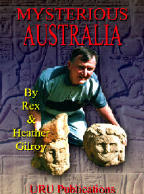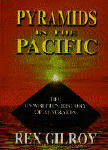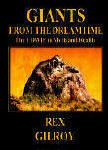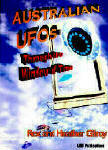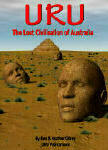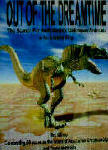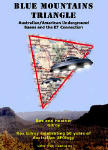The fossilised footprints of our primitive ancestors can tell us much about their physiology, of their
bone structure and musculation as they walked, which in the case of Homo erectus does not
appear to have changed much since the first appearance of the modern human foot around 3 million
years ago.
Actually our Aboriginal people of the outback can tell a lot from a fossil footprint, such as
whether the individual was flat-footed, sluggish or a fast runner, male or female. Some old Aboriginal
men will tell you that flat-footed giant tracks belonged to beings who were used to living in a moister
environment, such as around lakes and swamps on the fringe of forestlands and did not have far to
walk to find food, usually shellfish, crabs or any easy to kill animal life that came to water.
We can learn much from modern-day hominid footprints, principally the subjects of this book
whose footprints [at least the authentic ones] have been cast as an aid in later study, and although fossil
foot bones of the Australian Homo erectus/Yowie are at present unavailable, we are able to study
those found outside Australia, principally Africa.
These show that Homo erectus would have stood
straight-backed and walked with a springy stride. An average Homo erectus stood around 5ft 6 inches
[1.6m] tall. He owed his posture to his bowl-shaped pelvis, which being so constructed, meant that the
socket at which the femur connects to the pelvis was further inward than in Australopithecus. This shift
gave Homo erectus a straight-legged stance, as opposed to the slightly bowed stance of
Australopithecus.
In addition, Homo erectus’ foot was arched to support his whole weight and had lost
the ability to grasp, which is a feature of ape feet.
As described in the previous chapter other primates are capable of bipedal movement, if only
for short periods; such as the chimpanzee, who can be as agile as a gibbon. This temporary bipedalism
is also known to the Gorilla, but it is prevented from achieving the upright stance and walk of Man due
to differences in the structure of the leg bones and muscles.
For example, Man possesses a strongly
developed buttock muscle, the gluteus maximus, which propels his body forward and over his legs with
each stride. On the other hand, in the Gorilla, the gluteus maximus is relatively underdeveloped, so that
the best it can accomplish bipedally is a shuffle. Yet Man also has the ability to lock his legs at the knee,
so that when he is standing erect he does not need to use his quadriceps to hold himself up. The
Gorilla, unable to lock its legs, is able to stand up in a tiring crouch.
I have said that the modern human foot dates back at least 3 million years. This was based upon
African finds, yet Heather and I have uncovered ‘modern’ type fossils of this age at a number of
Australian locations over the years [although certain of these footprints may be much older] which at 3
million years old at our present knowledge pre-date the appearance of Homo erectus; more likely they
should at that age, have been made by proto-Homo erectus.
Much of the best fossil footprint material has been discovered on the Blue Mountains over the
years. One example near Katoomba is a set of three hominid footprints preserved by volcanic ash,
embedded in mudstone up to 35cm above a conglomerate layer of water smoothed quartz and other
stones, the remains of an ancient water course.
Two of the footprints are of right feet 26cm in length by 15cm width across the toes and about
7cm width at the heel.
They are impressed 5cm deep in the rock. They are spaced 17cm apart, one
behind the other. The third footprint is situated 1.44m to the left of the other two, and like them is a
right foot [the left feet impressions have worn away]. It measures 33cm in length by 17.5cm in width
across the toes and is embedded 6cm deep in the rock. Despite distortions these are ‘modern’ shaped
foot impressions.
Yet these fossils were originally covered soon after their impression by a volcanic ash
deposit; itself the first of several to be deposited over the ages, separated by intermittent layers of
mudstone forming the cliff that towers overhead, and which is capped by a final layer of basalt. It is
obvious that these “tracks through time” are of truly immense age, far older than the 3 million years age
given to other ‘modern’ structured hominid footprints on the Blue Mountains.
Rex Gilroy
Australian Yowie Research Centre,
Katoomba, NSW
Monday 25th June 2007


